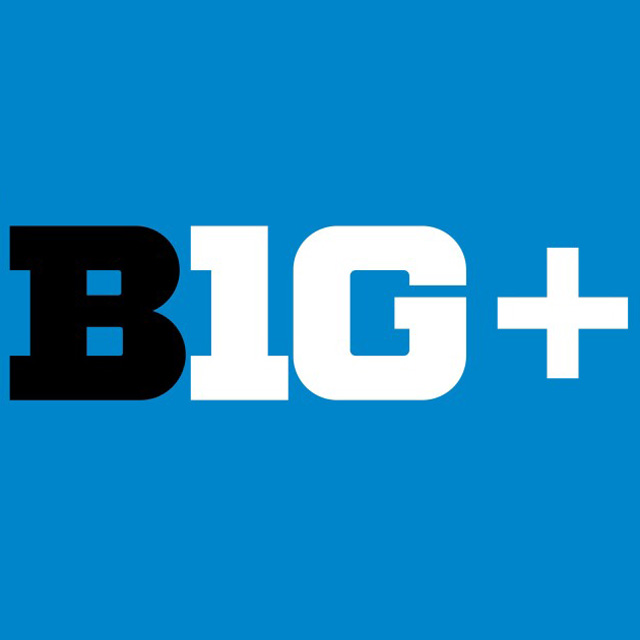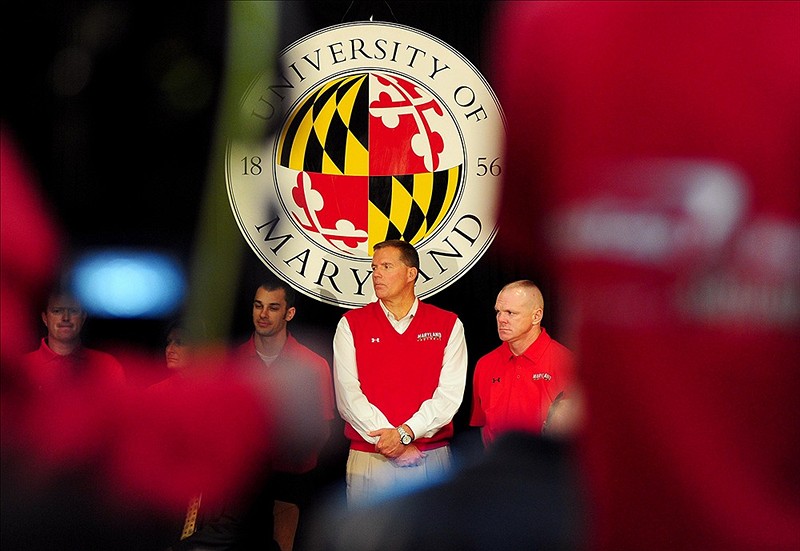Tom Dienhart, BTN.com Senior Writer, November 19, 2012
The game of conference membership musical chairs continues, with no end in sight. The Big Ten made the latest move, bringing aboard Maryland beginning in 2014-15. The addition was made official today when the school?s board of regents unanimously approved leaving the ACC-of which Maryland is a charter member-for the Big Ten.
Rutgers of the Big East is expected to soon follow, which would swell the Big Ten?s ranks to 14 schools. That would make the Big Ten and SEC the only two ?major conferences? with 14 members. How will this impact the Pac-12, Big 12 and ACC? Will they now make moves to grow?
Conference landscapes have shifted often in recent years. And, make no mistake about it: The moves are being made for one sport, and one sport only: football. It?s also about enhancing TV demographics by moving into new-and hopefully heavily populated-markets because that equals greater dollars for television contracts.
[RELATED: What are Big Ten writers saying about this news? Read Dienhart's Big Ten links.]
We saw the Pac-10 add Utah and Colorado and become the Pac-12 in 2012. The SEC grew to 14 schools in 2012 with the arrivals of Texas A&M and Missouri. The ACC soon will welcome Pitt and Syracuse, as well as Notre Dame for all sports but football, but now must deal with Maryland?s departure. And on it has gone-and likely will go.
| Here is a look at how Maryland has done in football vs. Big Ten schools. The Terrapins never have played Illinois, Iowa, Nebraska, Northwestern, Ohio St., Wisconsin. | |
| Indiana | 0-2, losing in 1934 and 1935. |
| Michigan | 0-3, losing in 1985, 1989, 1990. |
| Michigan State | 1-4, winning in 1950 and losing twice in 1944, 1946, 1947. |
| Minnesota | 1-0, winning in 1977 in the Hall of Fame Bowl. |
| Penn State | Penn State: 1-35-1. |
| Purdue | 1-0, winning in 2006 in the Champs Sports Bowl. |
The Big Ten welcomed Nebraska in 2011 after Penn State came aboard in 1993. Now, Maryland is slated to join the Big Ten, with Rutgers expected to follow. And it will cost each school a pretty penny. Maryland must pay the ACC a $50 million exit fee. Rutgers must dole out $10 million to the Big East for bolting. But for each school, it will be a big step up in prestige, stability, competition and money.
No one is going to confuse Maryland or Rutgers with being a football power. The Terrapins have been to one BCS bowl game. The Scarlet Knights never have been to one. Tradition? Facilities? Fan passion? None of it is noteworthy for either school.
That?s why some feel the Big Ten?s decision to add Maryland and possibly Rutgers is dubious. Rather, the decision to add the two schools seems to be more about economics than enhancing the Big Ten?s football profile. Fair enough.
[REALTED: Clothes Call: Meet the Maryland Terps]
This bold stroke by the Big Ten has some wondering if another round of conference musical chairs will be set off. Stay tuned. For now, let?s take a closer look at this move.
The positives:
- Recruiting: Having league teams in Maryland and New Jersey would open two of the nation?s most fertile recruiting territories. The Beltway area around Baltimore and Washington, D.C. is particularly bountiful.
- TV: Rutgers and Maryland sit in two of the nation?s larger media markets that have lots of television sets. Cities like New York, Philadelphia, Baltimore, Washington would now be in the Big Ten?s footprint. That seemingly would mean more money for the Big Ten for its first-tier television rights-as well as for the Big Ten Network.
- Academics: Rutgers and Maryland pass the mortar board test, as each is a member of the prestigious Association of American Universities (see the full list), so this will cause heads to nod and fingers to snap among the ivory tower crowd.
But there also are some potential negatives.
- Rivalries: By adding two teams and growing to 14 members, the league threatens to erode rivalries. Yes, some rivalries will be protected-as the league did when it moved to 12 teams. But it will be more difficult to protect as many rivalries in a 14-team league.
- Travel: Having a conference that stretches from Nebraska to New Jersey will make for arduous travel, especially for the Olympic sports during mid-week games. It also will be expensive and time consuming, which seemingly could have a negative impact on academics. According to Google Maps, the distance from Lincoln, Neb., to New Brunswick, N.J. is 1,290 miles-or 21 hours and 44 minutes. No road trip will be farther in the Big Ten.
- Tradition: The Big Ten was founded as a Midwestern-oriented league, but the conference continues to push its boundaries west (Nebraska) and east (Penn State, Rutgers, Maryland). Is the conference?s identity at stake?
Regardless, Big Ten commissioner Jim Delany has an eye on the future. He?s a visionary who won?t be bound by conventional thinking. And he rarely is wrong with his instincts or decisions. So, here come the Terrapins-and likely Rutgers. And reports indicate the divisions will look like this: Leaders: Rutgers, Maryland, Ohio State, Penn State, Wisconsin, Purdue, Indiana. Legends: Michigan, Nebraska, Iowa, Michigan State, Illinois, Minnesota, Northwestern.
No one will call Maryland an ACC power, but it has had its moments, with most of them coming in basketball. In fact, it?s more of a basketball school than a football school.
| Maryland football 2012 | |||
| Opponent | Time | Result | |
| vs. William & Mary | 3:00 PM ET | W 7 – 6 | |
| at Temple | 12:00 PM ET | W 36 – 27 | |
| vs. Connecticut | 12:30 PM ET | L 21 – 24 | |
| at 8 West Virginia | 12:00 PM ET | L 21 – 31 | |
| vs. Wake Forest | 3:30 PM ET | W 19 – 14 | |
| at Virginia | 3:00 PM ET | W 27 – 20 | |
| vs. North Carolina State | 3:30 PM ET | L 18 – 20 | |
| at Boston College | 1:00 PM ET | L 17 – 20 | |
| vs. Georgia Tech | 12:30 PM ET | L 13 – 33 | |
| at 10 Clemson | 3:30 PM ET | L 10 – 45 | |
| vs. 10 Florida State | 12:00 PM ET | L 14 – 41 | |
| at North Carolina | TBA | ||
The Terrapins won the NCAA title in 2002, beating Indiana. Maryland also went to the Final Four in 2001, and won five ACC regular-season titles and three tourney crowns with 24 NCAA appearances. The program has produced some great players, including Joe Smith, John Lucas, Len Elmore, Albert King, Tom McMillen and Juan Dixon, to name a few. There also have been some top coaches, including Gary Williams and Lefty Driesell.
Success in football has been more fleeting. Maryland claims national championships in 1951 and 1953, and it has won nine ACC titles and produced the likes of Randy White, Boomer Esiason, Neil O?Donnell, Frank Reich, Torrey Smith, D?Qwell Jackson, Vernon Davis and Shawne Merriman, among others.
Bobby Ross and Ralph Friedgen have been two of the best coaches in school annals. In fact, Friedgen led Maryland to its last ACC crown in 2001, which the Terps culminated with an Orange Bowl loss to Florida. But since then, Maryland has struggled.
The Terps-who have gone to seven bowls since 2001 and beat Purdue in the Champs Sports Bowl in 2006 –are 4-7 this season in their second year under Randy Edsall, who went 2-10 in his debut in 2011.
Rutgers has had even less success than Maryland in both sports. The Scarlet Knights have been to seven bowls, with all but one coming since 2005. Greg Schiano is the architect of the program, going 68-67 in 11 years (2001-11). But after establishing the program, he left after last season to coach the Tampa Bay Buccaneers. But Rutgers is a ranked team this season, sporting a 9-1 mark under Kyle Flood with an eye on the Big East title and a BCS bowl.
Basketball has been even less fruitful. Rutgers has been in just six NCAA tourneys, with the last time being in 1991. But the Scarlet Knights made it to the Final Four in 1976.
Despite Maryland and Rutgers lacking glowing resumes like the last two Big Ten additions Nebraska and Penn State, Delany and the Big Ten are moving forward with a bold and perhaps in the eyes of some a bit risky move that promises to forever chance the league-and college sports.
 |
BTN.com senior writer Tom Dienhart is a veteran sports journalist who covers Big Ten football and men's basketball for BTN.com and BTN TV. Find him on Twitter and Facebook, read all of his work at btn.com/tomdienhart, and subscribe to his posts via RSS. Also, send questions to his weekly mailbag using the form below and read all of his previous answers in his reader mailbag section. |







 See what's coming up live on B1G+ every day of the season at BigTenPlus.com.
See what's coming up live on B1G+ every day of the season at BigTenPlus.com. 